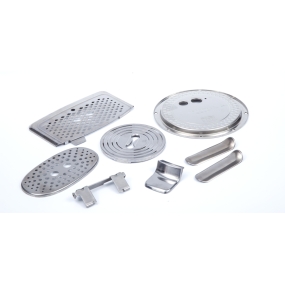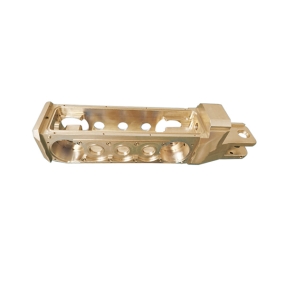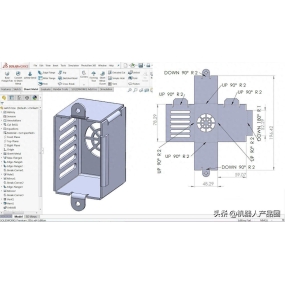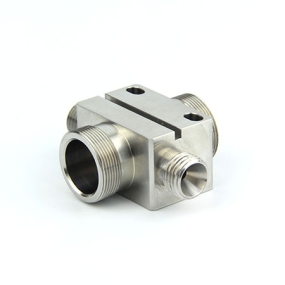Ferrum labor sheet metal processing is the process of cutting, shaping, connecting, and other processes around raw materials such as sheets, profiles, and pipes. It has its own processing characteristics and features, thus forming its own unique processing work content, production process, and operating standards.
The specific work content of sheet metal processing is related to the structure and complexity of sheet metal components. Generally speaking, its work content and steps mainly include the following.
Formula metalla part is intellegens est praecepta pro processione metalla folii. Solo per intellegendum partis drawings potemus ultra analysere et clarificare structuram parterum, intellegere formam, compositionem, dimensiones, et relevantes necessitates technicas componentum, et procedere cum subsequente processione. Tabulae metallis partes drawings are not only the basis for processing, but also the basis for product inspection, and are important technical documents in production.
Sub intellegendum diagrammas metalicam part is mensurae, formae formae et mensurae quae sunt in mensurae mensurae aedificationis aedificationis aedificationis aedificationis aedificationis et aedificationis aedificationis aedificationis aedificationis et aedificationis aedificationis aedificationis aedificationis et aedificationis aedificationis aedificationis aedificationis et aedificationis aedificationis aedificationis aedificationis aedificationis aedificationis aedificationis aedificationis aedificationis aedificationis aedificationis aedificationis aedificationis aedificationis aedificationis aedidiagramma), data, marking or inspection template of all or part of the parts accurately drawn at a 1:1 ratio required in the product manufacturing process. Unfolding and layout is the first process of sheet metal processing, and essentially, it is also one of the work contents of formulating process specifications (process documents that specify the manufacturing process and operation methods of sheet metal components).
The preparation of process specifications belongs to the production technology preparation of sheet metal components, which is generally completed by engineering and technical personnel. However, in different industries and enterprises of different scales, the preparation of process specifications may vary slightly depending on the complexity of the components, or there may be situations where cold sheet metal technicians or senior cold sheet metal workers are responsible for completing them. Usually, ordinary cold work sheet metal workers only need to complete the tasks of marking (marking) the unfolded layout diagram of the processed components, making sample rods, templates, etc. based on relevant technical documents such as unfolded layout diagrams.

Panorama
3. Production and processing: Based on relevant sheet metal processing technology documents, various sheet metal processing equipment and tools are used, and various processing methods (including heat treatment, surface treatment, etc.) are adopted to manufacture products that meet the requirements of sheet metal part drawings.
Usually, the manufacturing process of sheet metal processing mainly includes the processes of material preparation, layout, processing, assembly, connection, correction, and inspection. Material preparation mainly refers to the preparation of raw materials and component blanks, including quality calculation of steel and leveling and straightening. When the size of the billet is larger than the required specifications of the raw material, splicing is also necessary, and the material preparation work includes marking, cutting, and connecting. Layout is to draw a layout diagram based on the mechanical drawing of the product, to determine the actual shape and size of the parts or products, to make an example and use the sample to draw processing lines, various positioning lines, etc. (i.e. marking) on the raw materials (or blanks). Cutting is the process of separating parts or blanks from raw materials using methods such as shearing, punching, or gas cutting, based on the line shape drawn during marking. According to the different requirements of the parts, some blanks still need to undergo stamping and other methods through molds before they can be processed and formed. During forming, it can be divided into bending forming and pressing forming according to different properties, and further divided into cold working forming and hot pressing forming according to different temperatures during forming.
The assembly and connection of steel structures involves assembling various steel structural components in parts or products, and connecting them as a whole using welding, riveting, bolt connections, and other methods. The entire assembly process of steel structures must undergo meticulous and rigorous quality inspections to prevent any impact on product quality caused by unqualified materials, incorrect process specifications, or parts or components that do not meet tolerance requirements entering the assembly.
When deformation is found in parts, components and products during inspection, certain corrective work is usually carried out, which is also an important characteristic of steel structure manufacturing technology.
Finally, in order to improve the anti-corrosion, wear-resistant, decorative and other functions of the component surface, the components that have completed production and processing often need to undergo subsequent coating treatment (mainly electroplating, painting, etc.). In order to ensure the quality of each processing step and the finished product of the components, strict inspection systems must also be implemented (including self inspection by the processor itself and specialized inspection by dedicated inspectors).
The process flow of the sheet metal processing refers to the entire process of gradually changing the shape, size, Habitatis, Habitatis, Habitatis, Habitatis, Habitatis, Habitatis, Habitatis, Habitatis, Habitatis, Habitatis, Habitatis, Habitatis, Habitatis, Habitatis, Habitatis, Habitatis, Habitatis, Habitatis, Habitatis, Habitatis, Habitatis, Habitatis, Habitatis, Habitatis, Habitatis, Habitatis, Habitatis, Habitatis, Habitatis, Habitatis, Habitatis, Habitatis, Habitatis, Habitatis, Habitatis, processus fabricationis, fluxus processionis eius saepe inter gradus processionis supra, sicut in diagramma fluxus infra monstratus est.
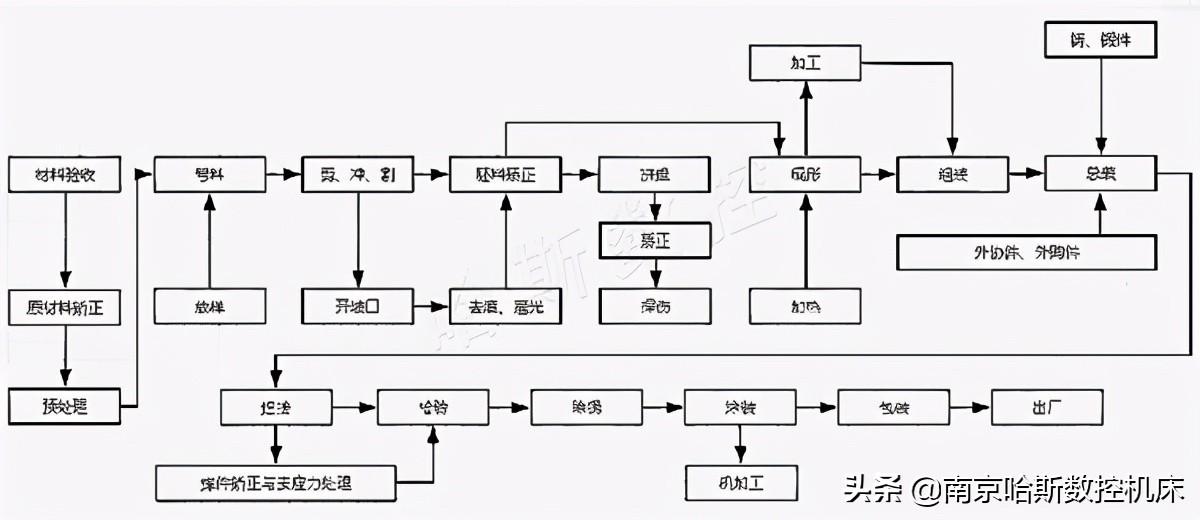 Process Diagram
Process Diagram
The process flow is an important technical document that guides the entire component processing flow, organizes and manages production and processing. For parts processing that is not completed in one workshop or even one factory, it is also an important basis for the flow of processes, division of labor and cooperation, and mutual connection and cooperation among various workshops.
Due factum quod fluxus procedentis tota via per singulos componentes ex materialibus raw usque ad completionem universae component is, etiam cognoscetur quasi via procedentis.
The process specification for sheet metal processing specifies the processing flow of parts, while the specific processing content is guided and controlled by the process specification.
The process specification is a technical document that guides the production process of parts. It is selected by process technicians based on the requirements of product drawings, the characteristics of the workpiece, the production batch, and the existing equipment and production capacity of the enterprise. After careful comprehensive analysis and comparison of several possible process schemes, the optimal process scheme is technically feasible and economically reasonable. In documento technico vacuum pro parte, method processionis eius, et dimensiones processionis specificas sunt; Natura, quantitate, sequence, et qualitate requies singulorum procedentium; Modelles Equipmentorum et speciacis per singulos procedentibus utili sunt; Formus instrumentorum processionis (sicut instrumentos auxiliarum, instrumentos, moldes, etc.) in omni processo utilis; Qualitatem et modos inspectionis per singulos procedentibus. Generally speaking, for a large and complex sheet metal structural component, sheet metal work often requires the cooperation of professional workers such as welders and crane operators. For sheet metal components that are directly processed using pressure processing techniques (such as presses, hydraulic presses, etc.), it is often referred to as stamping work; For the processing technology that uses welding for component assembly, it is often referred to as welding technology, while for the assembly process that requires both mechanical processing and welding, riveting and other processing technologies, it is directly referred to as assembly technology or riveting technology.
Nota est quod specificationes procedentis non fixae sunt et necesse continuo meliora esse et perfecti in praecepto producentis. rationaliter eorum variatur dependente a diversis firmis, conditionibus producentis, etiam nivellum technique diversorum operatorum. However, a general principle is that the preparation of process procedures should ensure progressiveness in technology, feasibility in process, and rationality in economy, while maintaining good working conditions.
Ut in diagramma procedentis monstratus est part is corpus rotae manus productionis alicui firmae, ex 2mm thicknesse LF3-M (5A03) facta est. Grupa productionis magna est, et necessarium est ut post partem formatur, non est manifestum thinning densitatis materiae aut cracking post inspectionem. The cutting and cutting process card in the picture is the cutting and cutting process. As the parts are mainly completed by using a press machine with corresponding molds, the subsequent processing is called stamping processing. The stamping process card and process diagram in the picture are the stamping processing technology of the part.
Praecinus ad exemplificandum modum et instrumentorum mensurae (gauges, parabolas) in carta procedentis est ad faciendum opus fabricationis et praepositionis technicae fabricationis et instrumentorum mensurae. Similarly, for the needs of production and technical management, some enterprises usually arrange the cutting of stamping parts and other materials as an independent workshop, and their stamping processing operation manuals are also collectively referred to as cutting cards. Some companies, based on their own characteristics, can integrate the cutting of stamping parts with the stamping workshop, and in this case, the cutting card and stamping card may also be combined in one.
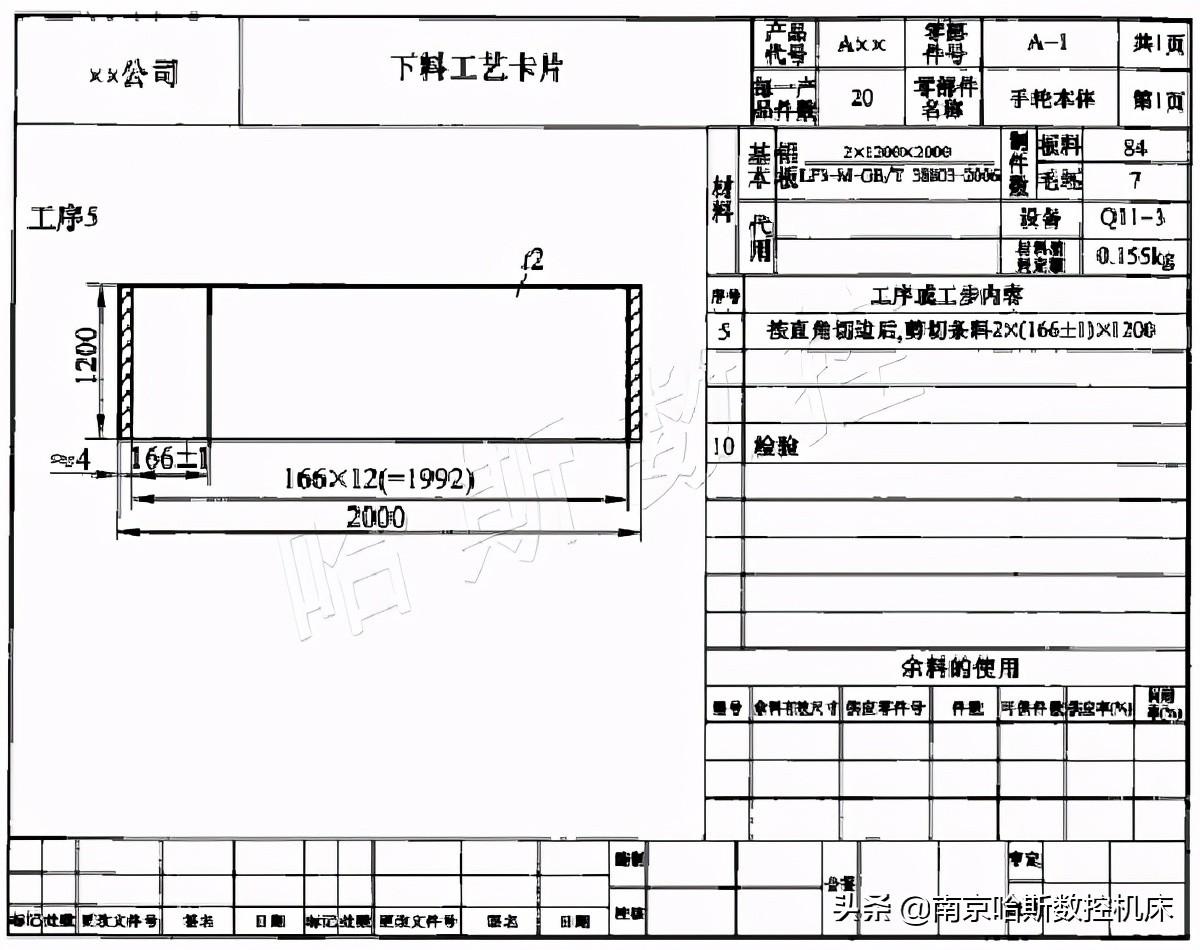 Cutting Process Card
Cutting Process Card
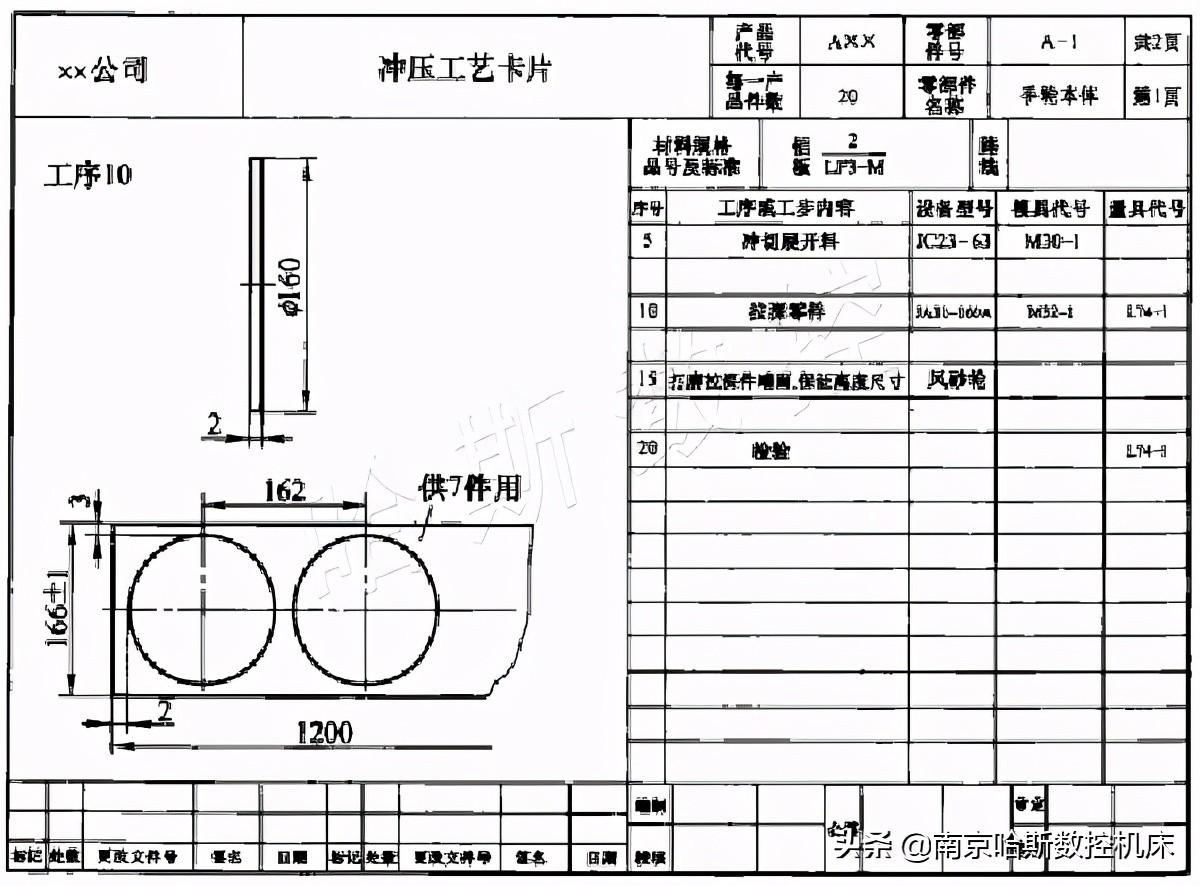
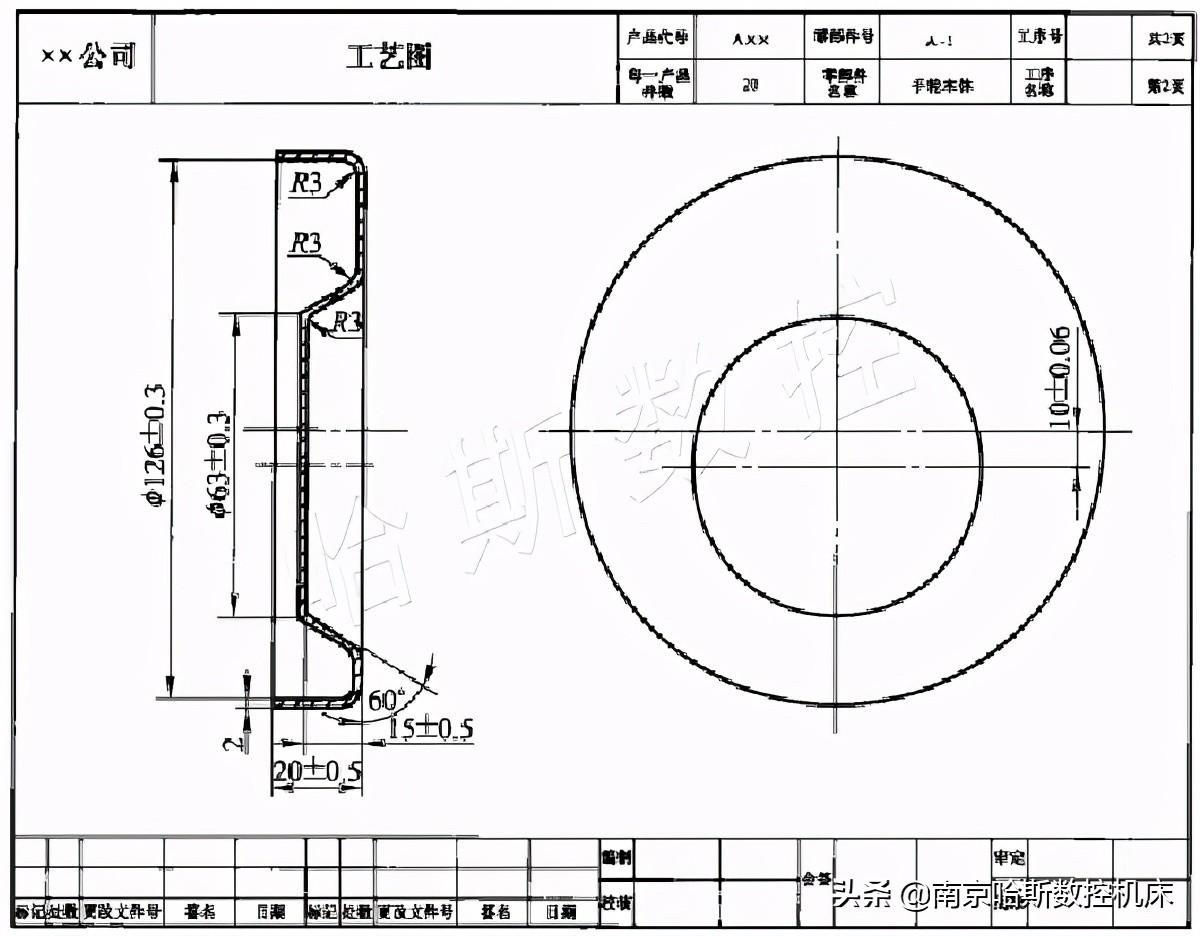 Process Diagram
Process Diagram
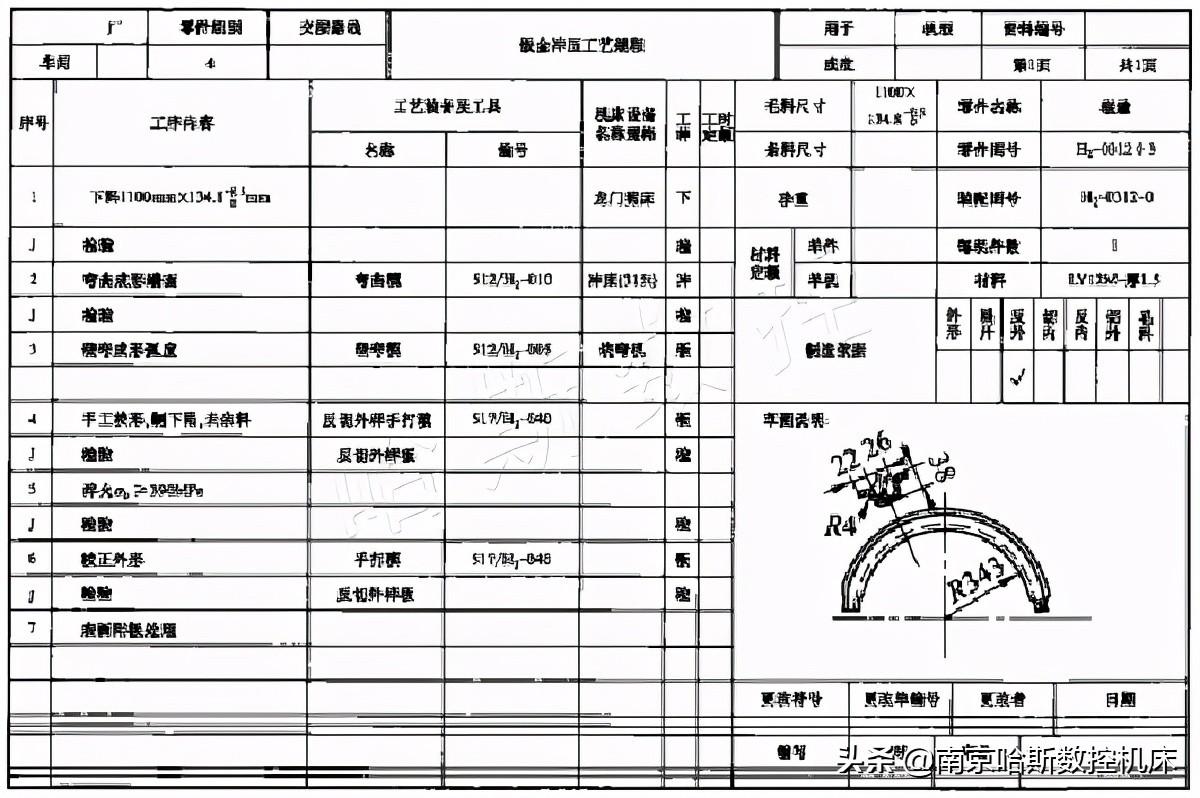 Sheet Metal Stamping Process Specification
Sheet Metal Stamping Process Specification
Generally speaking, when it comes to the processing technology of all sheet metal parts, it is often not completed by a single cutting and stamping workshop. Many parts may also be interspersed with mechanical processing, heat treatment, surface treatment, etc. Cross workshop and cross department operation guidance is controlled by their corresponding process specifications. However, in different industries, due to differences in production products and processing habits, especially when processing sheet metal components with low professional technical requirements and low complexity, a comprehensive process specification is often compiled to guide production. The sheet stamping process specification is the stamping process specification for the frame edge (made of 1.5mm LF12M material) on a certain enterprise's product.


 English
English Spanish
Spanish Arabic
Arabic Portuguese
Portuguese Belarusian
Belarusian Japanese
Japanese Russian
Russian Icelandic
Icelandic Bulgarian
Bulgarian Azerbaijani
Azerbaijani Estonian
Estonian Irish
Irish Polish
Polish Persian
Persian Boolean
Boolean Danish
Danish German
German French
French Filipino
Filipino Finnish
Finnish Korean
Korean Dutch
Dutch Galician
Galician Catalan
Catalan Czech
Czech Croatian
Croatian Latvian
Latvian Romanian
Romanian Maltese
Maltese Malay
Malay Macedonian
Macedonian Norwegian
Norwegian Swedish
Swedish Serbian
Serbian Slovak
Slovak Slovenian
Slovenian Swahili
Swahili Thai
Thai Turkish
Turkish Welsh
Welsh Urdu
Urdu Ukrainian
Ukrainian Greek
Greek Hungarian
Hungarian Italian
Italian Yiddish
Yiddish Indonesian
Indonesian Vietnamese
Vietnamese Haitian Creole
Haitian Creole Spanish Basque
Spanish Basque


